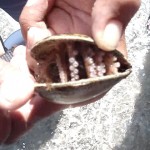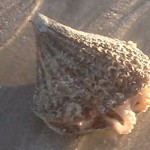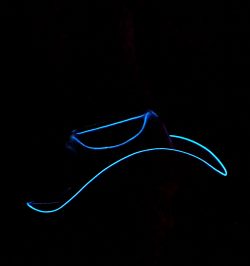![MP900423107[1] MP900423107[1]](https://www.sonoranresorts.mx/wp-content/uploads/2012/08/MP9004231071-300x200.jpg) If you’ve ever explored the tide pools anywhere along the beaches of Puerto Peñasco on the Sea of Cortez, you’ve surely watched and/or played with an octopus or two. You may not know that those small ones you’ve seen, possibly living in a small clam or scallop shell, were not babies but full grown adults of one of the 300 species of octopuses that come in a multitude of sizes. Here are a few more facts you may not know about this strong, sensitive and very intelligent cephalopod:
If you’ve ever explored the tide pools anywhere along the beaches of Puerto Peñasco on the Sea of Cortez, you’ve surely watched and/or played with an octopus or two. You may not know that those small ones you’ve seen, possibly living in a small clam or scallop shell, were not babies but full grown adults of one of the 300 species of octopuses that come in a multitude of sizes. Here are a few more facts you may not know about this strong, sensitive and very intelligent cephalopod:
- The octopus has been traced back 30 million years to when its ancestors swam the Antarctica.
- Octopuses are cephalopods, a class of mollusk that also includes squid, cuttlefish, and nautilus.
- Big Family Tree: There are approximately 300 species of octopi ranging in size from just a few centimeters in length up to 15-17 feet.
- Plural of Octopus: There seems to be two distinct schools of thought on what is acceptable usage for the plural of octopus. One group uses “octopuses” as the familiar plural and “octopods” as the more formal or scientific form. This group frowns upon the other plural form, “octopi” as not acceptable. The other school accepts all three plural forms, with “octopi” used as the collective term such as when referring to the entire species. For this article, we shall use the collective plural term “Octopi”.
- Arms not Tentacles: Octopi do not have tentacles. Those eight protrusions are fully multifunctional arms that are connected in the middle of the octopuses, mantle.
- Escape Artists: Octopi have no shell or skeletal hardness anywhere on their bodies except for a small beak (similar to a parrot’s beak). This allows them to squeeze through extremely tight spaces; in fact, any space their beak will fit through they can squeeze their entire body through. This comes in handy for escaping a hungry Moray or shark. It also serves them well as a predator to surprise their dinner guest as they unfurl from an impossibly small hole or crevice.
- Masters of Disguise: Octopi come equipped with special skin cells called chromatophores that allow them to change the color
 and texture of their skin to blend in perfectly with their surroundings; most helpful for hiding in plain sight. Click on this video by Rocky Point resident videographer, Mark Olszewski to watch a small octopus change colors several times as it blends into different surroundings trying to escape the diver wanting to play with it: http://www.youtube.com/watch?v=wIDO0Ze8_dI
and texture of their skin to blend in perfectly with their surroundings; most helpful for hiding in plain sight. Click on this video by Rocky Point resident videographer, Mark Olszewski to watch a small octopus change colors several times as it blends into different surroundings trying to escape the diver wanting to play with it: http://www.youtube.com/watch?v=wIDO0Ze8_dI - Jet Propulsion: Octopi can travel along the ocean floor using their arms while also scouring for crustacean snacks; or they can use jet propulsion by sucking a large amount of water into their mantle cavity then squeeze it quickly out through a narrow siphon which launches them up to 25 miles per hour to escape a predator or pursue a meal.
- Blue Bloods: Octopi have three hearts and blue blood.
- Super Sensitive, Super Strong: The octopuses’ nervous system is in their arms which are amazingly strong and flexible. Two rows of suction cups along each arm not only help them secure whatever they grab a hold of but are so sensitive they can determine the texture, shape and even taste of whatever they touch—and leave some serious hickeys!
- Super Intelligent: Octopi are considered the most intelligent of the invertebrates. Scientists have proven they possess short and long-term memory, have an uncanny ability to solve human puzzles, negotiate mazes, distinguish between shapes and patterns, and they can imitate observed behavior. So respected is their intelligence, in fact, that several countries require they be anesthetized before scientists can conduct surgery on them; and the United Kingdom has given the octopus “honorary”
 vertebrate status protecting it from cruelty and neglect as are other animals.
vertebrate status protecting it from cruelty and neglect as are other animals. - Myth: Octopi are not man-eating, ship-wrecking monsters as they have been depicted in historical fantasies. The largest Octopus recorded was 33 feet long. The largest species, the Giant Pacific Octopus will only grow to about 15-17 feet; hardly big enough to capsize a ship and devour the crew. That doesn’t mean it’s O.K. to agitate a fifteen foot long octopus under any circumstances since one that size could hickey-hug you to death without trying.
- Truth: A new study released in 2009 by the University of Melbourne, Australia, revealed that all octopuses are venomous, but only the blue-ringed octopus group is known to be deadly to humans.
- Life is Short: Octopi only live for less than two years up to possibly five years, in the case of the Giant Pacific Octopus.
For more information on this incredibly interesting creature, you can visit:
http://animals.about.com/od/molluscs/a/octopus-facts.htm or
This blog is powered by www.sonoranresorts.mx , Jim Ringquist, Director of Sales and Marketing.




